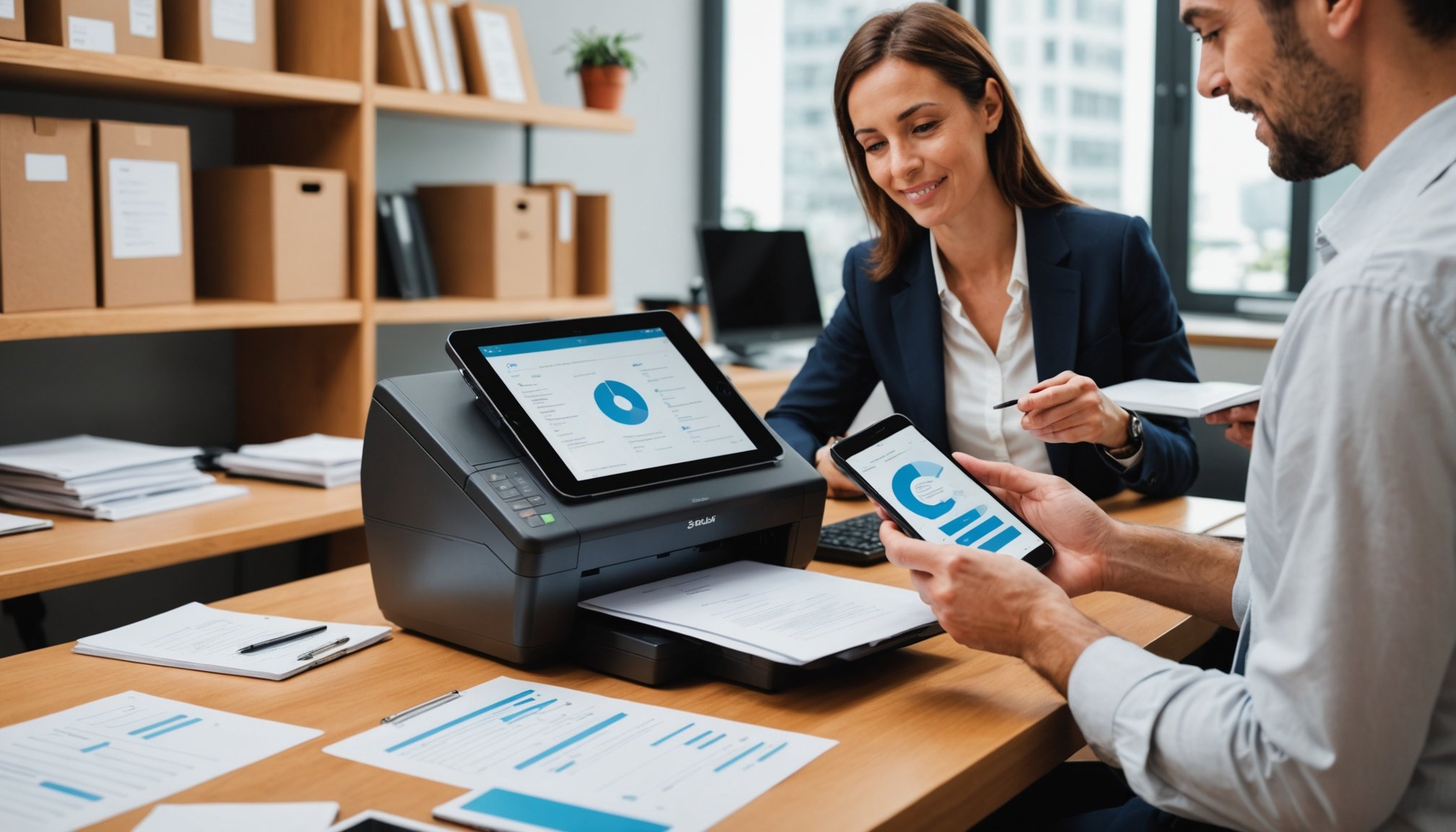Advanced Smartphone Scanning Techniques
In today’s fast-paced world, smartphone scanning techniques have revolutionised the way we handle document management. At their core, these techniques utilise your phone’s camera, transforming it into a portable scanner. This makes document management not only efficient but also incredibly convenient. With just a few taps, you can digitise important paperwork, receipts, and even handwritten notes.
When selecting an app for scanning, it’s essential to focus on key features such as OCR (Optical Character Recognition) capabilities, which enable text extraction from images. Additionally, apps offering cloud integration streamline document management, allowing users to access their files across multiple devices seamlessly.
Also to read : Mastering exciting travel itineraries: the definitive guide to smartphone wizardry
One can’t underestimate the importance of resolution and image quality in scanning. A higher resolution ensures that every detail of your document is captured with precision, preventing the loss of critical information. It’s worth noting that a poor-quality scan can lead to mistakes, especially when using OCR. Therefore, investing in an app that prioritises high-quality image capture is paramount.
In conclusion, by leveraging the advanced capabilities of smartphone scanning apps, you can maintain an organised, paperless system that enhances both personal and professional productivity. Explore the available options to find the one that fits your unique needs.
Have you seen this : Elevate your smart home lighting: the ultimate smartphone guide to customizing ambiance for every occasion
Best Scanning Apps Comparison
Examining document scanning apps reveals a range of options, each offering distinct app features and varying efficiency. This section provides an insightful look at the top contenders in this category.
Overview of Leading Document Scanning Apps
Mainstream apps like CamScanner, Adobe Scan, and Microsoft Office Lens lead the pack. These apps are esteemed for their diverse capability to manage multiple document types seamlessly. CamScanner is popular for its advanced editing tools and multi-platform usability. Adobe Scan, deeply integrated with Adobe services, offers excellent text recognition and adjustments. Microsoft Office Lens is lauded for its optimization, especially for whiteboard and document capture – crucial for those eyeing enhanced efficiency in a mobile-ready environment.
Features and Pricing Comparison
In terms of features, CamScanner offers tools like collaborative sharing and cloud storage integration. Pricing can vary from free basic usage to more feature-rich versions via subscription models. Adobe Scan, generally free, proposes premium features linked to Adobe’s ecosystem. Office Lens stands out for its cost-free integration with the Microsoft suite, making it a budget-friendly choice for users already invested in Microsoft’s services. There is a consensus that premium pricing often correlates with enhanced capabilities and app features.
Optimizing Document Quality for Scanning
When optimizing document quality for scanning, lighting conditions play a pivotal role. Proper lighting ensures that the document is free from shadows and glares, which can obscure text and images. Ideally, natural light should be used, but if that’s unavailable, ensure that artificial light is evenly distributed across the document’s surface.
Another essential tip involves using grids and alignment tools on your smartphone. These tools help maintain the correct angles and positioning, resulting in sharper and more aligned scans. Most modern smartphones include these features in their camera settings, allowing users to adjust the frame to fit the document precisely. Consistently using these aids can significantly enhance scan quality.
For capturing text and images clearly, keep the camera lens clean and ensure the document lies flat. This minimizes distortion and focus issues. When photographing, keep a steady hand or use a tripod to avoid blurriness. Additionally, increase the resolution setting on your device for detailed captures, especially important for scanning fine print or intricate images.
By considering these scanning tips, such as leveraging lighting, maintaining proper alignment, and ensuring clarity, document quality can be vastly improved. This approach not only enhances readability but also facilitates efficient storage and sharing of scanned documents.
Integrating Scanning Techniques into Workflows
Integrating smartphone scans into existing document management systems can enhance workflow integration. To efficiently incorporate scanning technologies, follow these steps:
- Identify your organization’s existing document management system and establish compatibility with smartphone apps.
- Choose a reliable scanning app that supports seamless workflow integration by syncing with cloud-based storage or your centralized platform.
- Train employees on scanning efficiencies, ensuring they understand how to utilize app features for optimal results.
Efficient document organization is crucial for maintaining workflow integration. Techniques to achieve this include:
- Naming conventions: Assign standardized filenames to scanned documents for easy retrieval.
- Indexing: Use tags or metadata to categorize and classify documents.
- Backups: Regularly update backups to prevent data loss and maintain organization.
Some real-life examples demonstrate improved workflow through smartphone scanning. A legal firm streamlined their client documentation by adopting mobile scanning, which allowed attorneys to instantly access files remotely. Another example is a healthcare provider that reduced paper clutter and improved patient record accuracy by implementing scanning among their staff.
Document organization benefits businesses by reducing redundancies, improving efficiency, and enabling easy access to critical information. Embracing these strategies can transform your workflow, offering a competitive edge.
Case Studies Illustrating Efficiency Gains
Exploring document management success through case studies reveals noteworthy efficiency improvements.
Business Use Case
Companies increasingly leverage smartphone scanning technologies to enhance efficiency. For instance, a multinational consulting firm integrated mobile scanning to digitise vast volumes of client documentation. This adoption resulted in a 30% reduction in physical storage needs and accelerated the retrieval time, showcasing a robust efficiency example. Employees now access digital documents instantly, which optimises productivity and streamlines client communications.
Personal Use Case
In personal settings, smartphone scanning has transformed document management for individuals. Consider the experience of a freelance graphic designer who adopted mobile scanning to organise client contracts and invoices. This simple switch allowed better tracking of paperwork, reduced lost documents, and improved document management success. The designer reported that time spent searching for files plummeted, allowing more focus on creative projects.
Educational Use Case
Educational institutions also benefit from improved document organisation. A secondary school implemented smartphone scanning for student records, lesson plans, and grading sheets. This resulted in significant time savings for teachers, providing a clear efficiency example. The digital system improved accessibility and collaboration among staff, supporting an enhanced learning environment for students. Teachers could now focus more on instructional delivery rather than administrative tasks.











